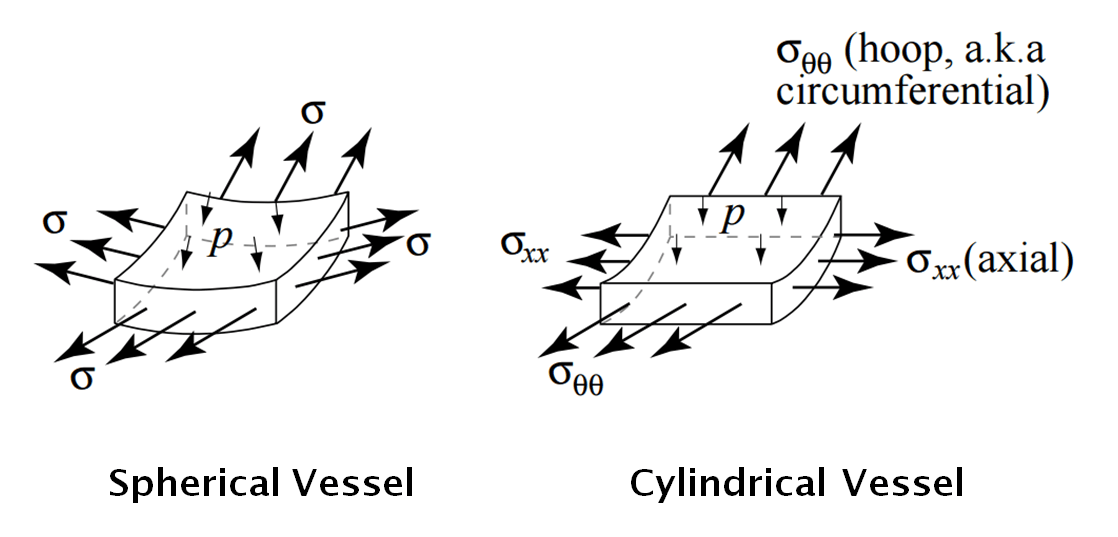Stresses in thin-walled Pressure Vessels
- Posted by: arvengtraining
- Category: Pressure Vessels

Thin-walled pressure vessels are widely used in industry for storage and transportation of liquids and gases when configured as tanks. For most applications, pressure vessels are either spherical or cylindrical. Depending on the application, pressure vessels will adopt one shape or the other. Most pressure vessels are fabricated from curved metal sheets that are joined by welds. Two weld types: double fillet joint and double welded butt joint with V grooves. Of these options, preference should be given to the latter.
The shell of an ideal thin-walled pressure vessel act as a membrane (that is, they are unaffected by bending stresses over most of their extent). A sphere is the optimal geometry for a closed pressure vessel in the sense of being the most structurally efficient shape, the internal pressure is acting equally in every point. This means that the wall stresses will be the same in every direction. A cylindrical vessel is somewhat less efficient for two reasons: the wall stresses vary with direction, closure by end caps can alter significantly the ideal membrane state, requiring additional local reinforcements. However, the cylindrical shape may be more convenient to fabricate and transport.
This could be explained looking closely at one infinitesimal element:

In the cylindrical vessel, the internal pressure is resisted by the hoop or circumferential stress in “arch action”, whereas the axial stress does not contribute. In the spherical vessel, the double curvature means that all stress directions around the pressure point contribute to resisting the pressure.
That is why for the same diameter and design conditions, the maximum normal stress in a spherical pressure vessel is one half as large as that in a cylindrical one. Therefore, the wall thickness follows the same relationship.
In other words, a sphere is the optimal geometry for a closed pressure vessel in the sense of being the most structurally efficient shape. However, the cylindrical shape may be more convenient to fabricate and transport.
It should be emphasized that the abovementioned analysis for thin-walled pressure vessels should be used only for cases of internal pressure (or more precisely, the internal pressure exceeds the external one). If a vessel is to be designed for external pressure, as in the case of a submarine or vacuum tank, wall buckling, whether elastic or inelastic, may well become the critical failure mode. Should that be the case, the previous wall stress analysis is only part of the design.
Source: Lecture 3 “Thin Wall Pressure Vessels” Introduction to Aerospace Structures (ASEN 3112) – Fall 2015. Department of Aerospace Engineering Sciences University of Colorado at Boulder.
If you want to know more:
ASME VIII | Design of Pressure Vessels



 WhatsApp
WhatsApp